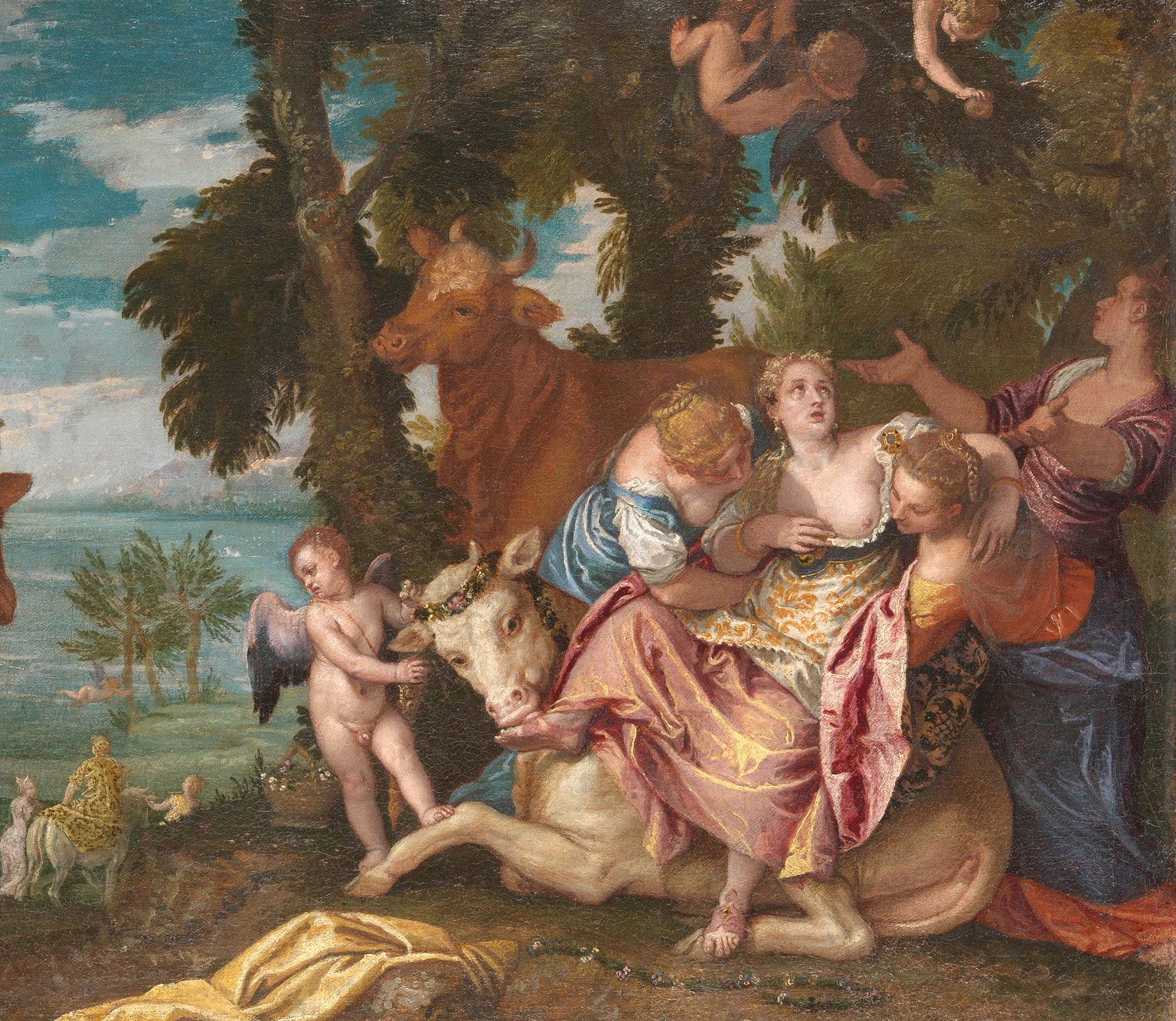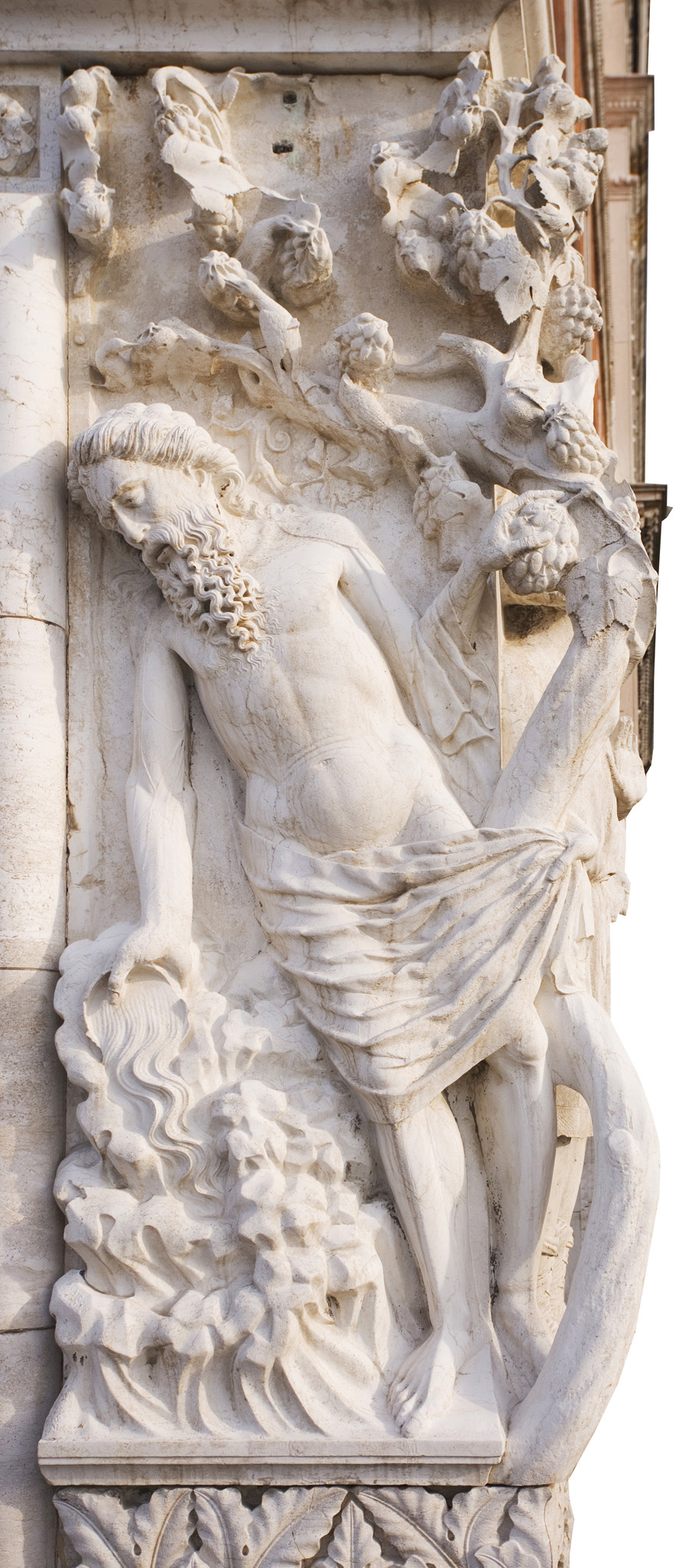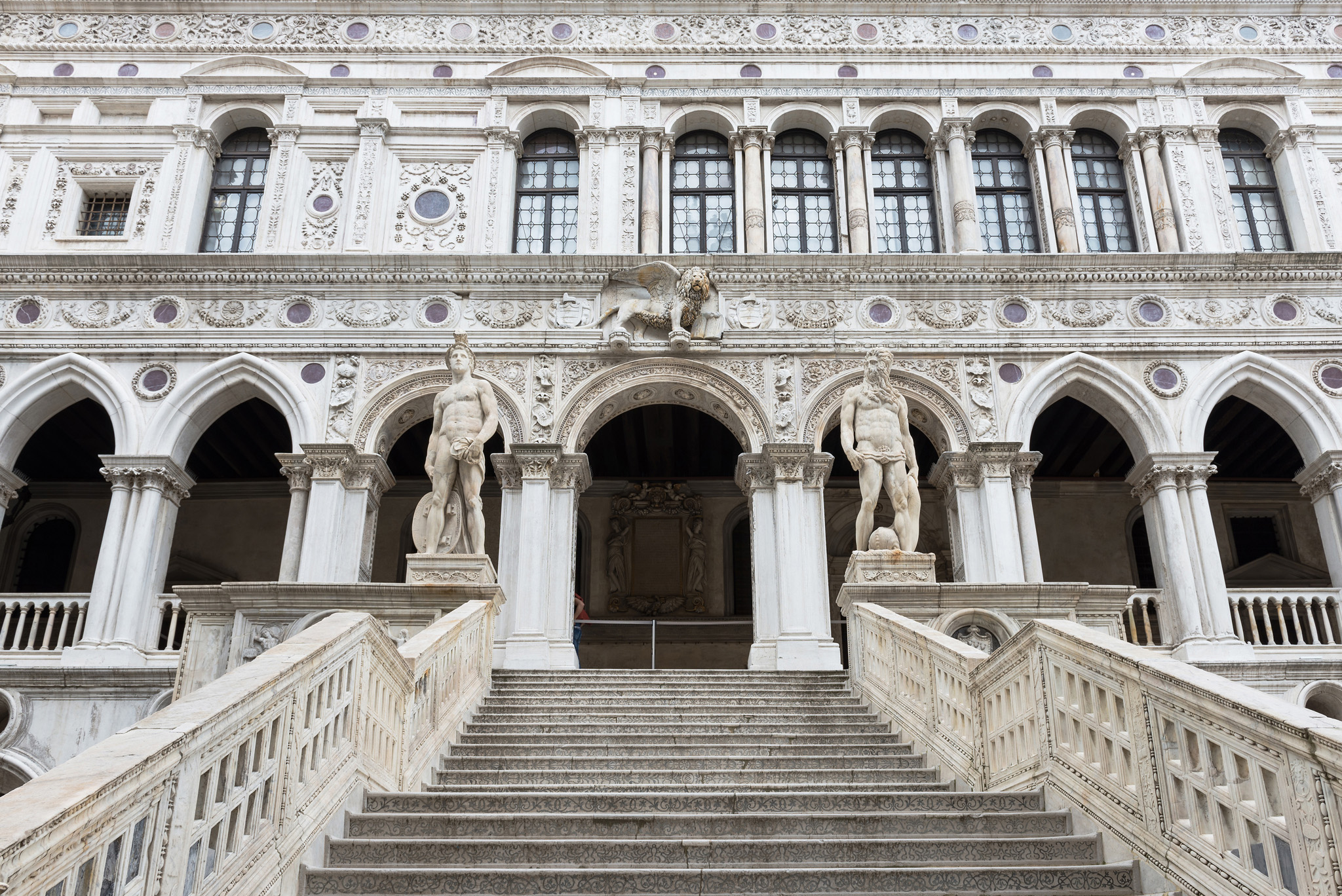DOGE’S PALACE ART AND ARCHITECTURE
1. Rape of Europa
Veronese’s allegorical work (1580) in the AntiCollegio shows Europa sitting on a bull, alias Jove, who is nuzzling her foot.

Veronese’s Rape of Europa
2. Paradise
Possibly the world’s largest oil painting (1588–90), Paradise by Jacopo and Domenico Tintoretto is said to contain 800 figures (Sala del Maggior Consiglio).
3. Arcade Capital
Proclaimed the “most beautiful in Europe” by art critic John Ruskin, this eight-sided carved capital on the southwest corner shows the zodiac signs and planets in imaginative detail.
4. The Triumph of Venice
Dominating the Sala del Senato is Tintoretto’s glorious work of propaganda (1580–84), showing allegorical and mythological figures proffering fruits of the sea to Venice.
5. Central Balcony
This magnificent early 15th-century stone terrace, embellished with columns, spires and a host of saints, opens off the Sala del Maggior Consiglio with a breathtaking view of the lagoon.
6. Arco Foscari
This triumphal archway of pink-and-cream stone layers leading to the Giants’ Staircase was commissioned by Doge Foscari in 1438.
7. Wellheads
Elaborate 16th-century well-heads were constructed to drain water from the gutters to the palace’s central courtyard.
8. Drunkenness of Noah
A powerful sculpture from the early 15th century adorns the façade’s southeast corner. Noah, inebriated and half-naked before his sons, is intended to portray the weakness of man.

Drunkenness of Noah
9. Coronation of the Virgin
The faded but inspired remains of Guariento’s fresco, discovered beneath Tintoretto’s Paradise, are housed in a side room, with panels explaining the restoration techniques.
10. Giants’ Staircase
So named for its two colossal statues of Mars and Neptune, which were sculpted by Sansovino in 1567 as symbols of Venice’s power. Visiting dignitaries would ascend the marble-lined stairs to the palace.

The marble-lined Giants' Staircase
THE EXTENT OF THE VENETIAN REPUBLIC
In its earliest days, Venice was little more than a huddle of islands in the middle of a shallow marshy lagoon, settled by a band of refugees from the Veneto region. Yet over the centuries it developed into a mighty republic reaching south to the Mediterranean and north to the Alps, based on the concept of trade. Salt was stored in massive warehouses, there were dealings in exotic spices and wondrous fabrics from the East, crusades were organized and fitted out here, and relics procured. Its main population probably never exceeded 160,000, however, well beyond its walled port towns, which stretched down the Dalmatian coast, were far-flung outposts such as Crete and Cyprus. These dominions protected key passages in commerce with the Arabic countries. Westward across the Po plain, Venice’s influence took in Treviso, Vicenza and Verona, extending all the way to Bergamo on the outskirts of Milan and the mighty Visconti dynasty.

Doge Gradenigo with the Venetian fleet at the siege of Chioggia, 1379

TOP 10 EVENTS IN THE VENETIAN REPUBLIC
1. Venice founded on 25 April (St Mark’s Day, AD 421)
2. First doge, Paoluccio Anafesto, elected (697)
3. St Mark’s body brought to Venice (828)
4. Ruthless siege of Constantinople during the Fourth Crusade under Doge Enrico Dandolo (1204)
5. Venice loses 60 per cent of its population to the Black Death (1348)
6. Doge Marin Falier decapitated for conspiracy (1355)
7. Genoese defeated at Battle of Chioggia, leaving Venice to reign over the Adriatic and Mediterranean (1381)
8. Victory over Turks at Battle of Lepanto (1571)
9. After 25 years of war, Crete is lost to the Turks (1669)
10. Napoleon invades the Veneto, bringing about the fall of the Venetian Republic (1797)
